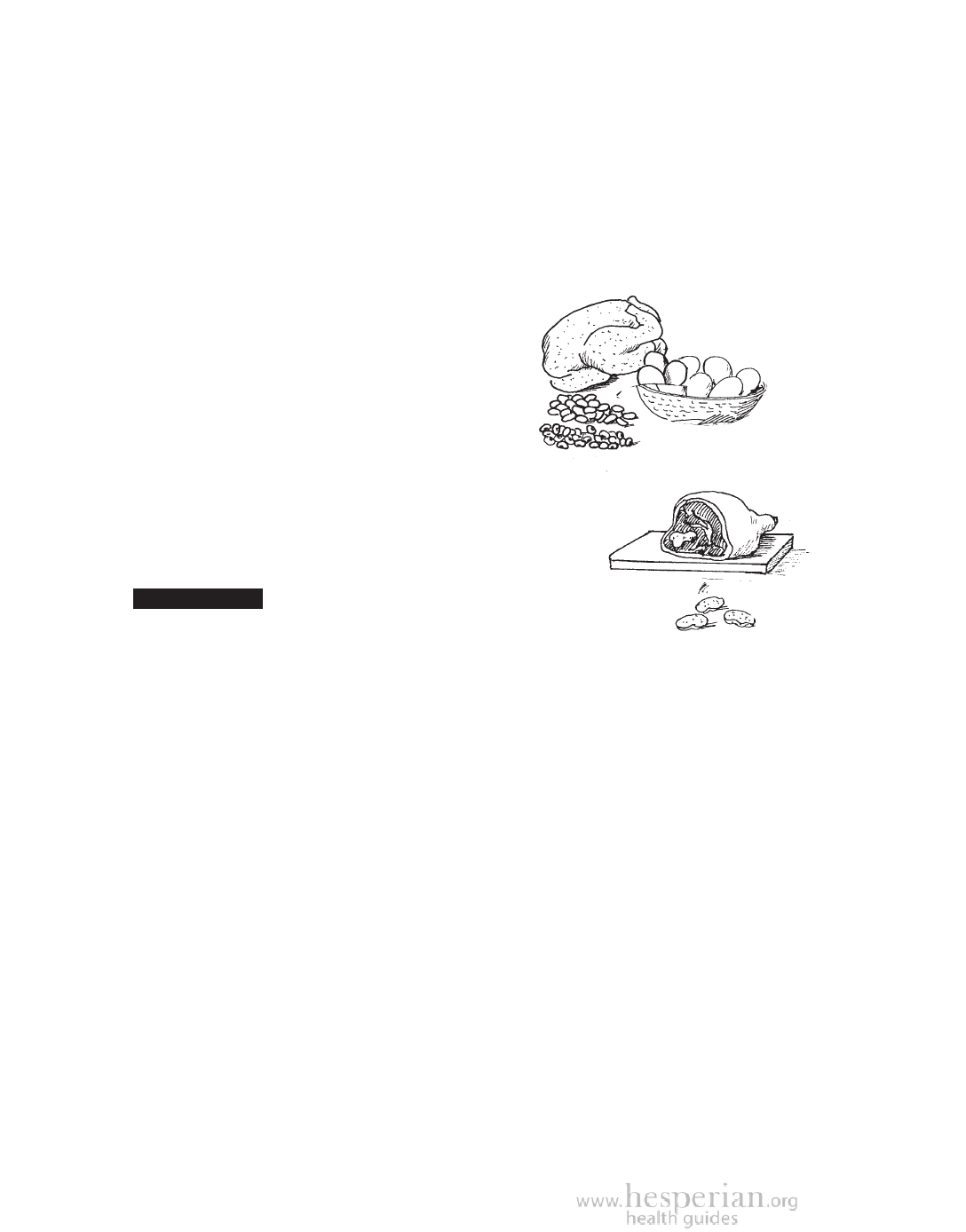
3 40 Ha r m fr o m Toxi c Ch e m i c a l s
Treatment for heavy metal poisoning
Heavy metal poisoning is very difficult to treat. The main treatment is called
chelation (pronounced kee-lay-shun). Chelation uses herbs and medicines to
carry toxic metal out of the body. It is most effective for poisoning caused by
sudden exposure to a large dose of metals (acute poisoning). Most exposure to
heavy metals is from daily contact over a long period, so this treatment may
not be useful.
Good nutrition can protect the body
When people do not have enough vitamins,
calcium, iron, or protein in their diet they
may suffer more severely from heavy metal
poisoning. The body will use toxic heavy
metals to fill in for the missing nutrients —
leading to serious illness.
Foods that help the body resist heavy metal
poisoning include: Beans, whole grains, meat, nuts,
eggs, milk, red, yellow and green vegetables, dark leafy
greens, coriander, cabbage, and fruits.
IMPORTANT: People who have goiter or may have
chronic cyanide poisoning should avoid foods that
make goiter worse, such as cabbage and cassava.
No foods will treat severe poisoning from heavy metals or other toxic
chemicals. However, improving the diet helps in treating most illnesses,
including illnesses caused by heavy metals. In areas where people are very
poor and are exposed to heavy metals and other toxics, such as mining
communities, the best approach may be a community nutrition program to
ensure that everyone is well-fed, strong, and resistant to illness. (For a story
about a nutrition program in a mining community, see page 475.)
POPs (Persistent Organic Pollutants)
One group of chemicals called POPs (Persistent Organic Pollutants) becomes
more dangerous as each chemical passes from air or water to accumulate in
animals, fish, and people. Persistent means they stay in the environment and in
our bodies for a long time. Organic means they can enter and affect all living
things. Pollutants means they are dangerous for the environment.
The most common POPs are dioxins (a chemical waste from manufacturing
and incineration), PCBs (a chemical fluid used in electronics and many
household products), and many kinds of pesticides (including DDT).
A Community Guide to Environmental Health 2012